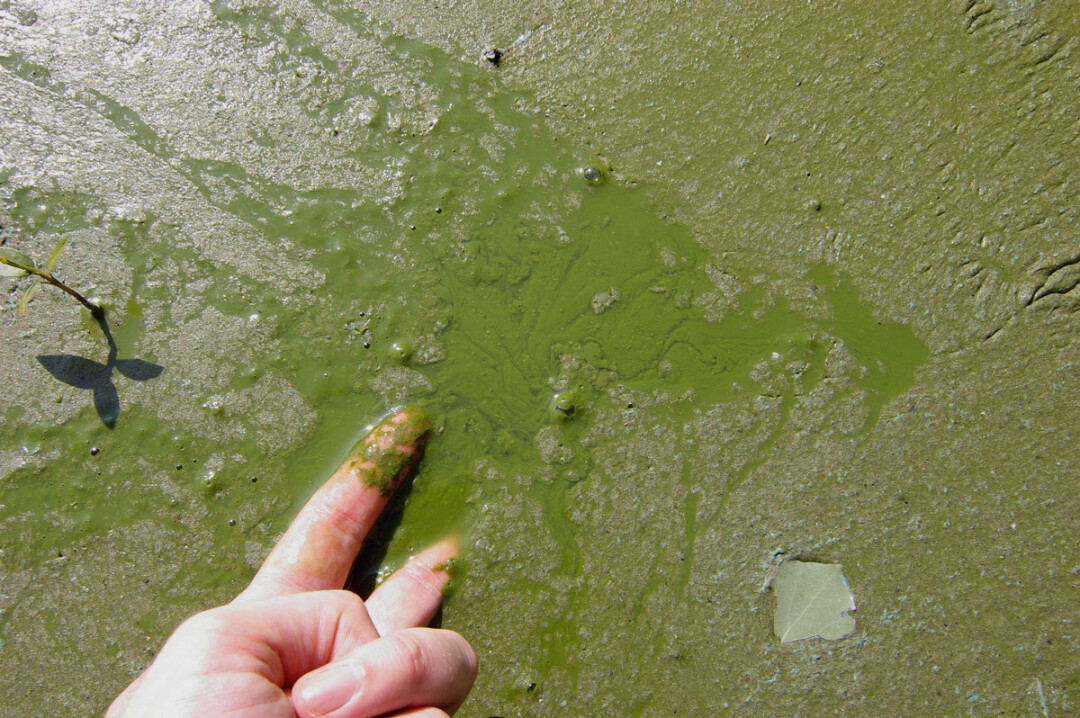Summertime Blues: Why Do Some Lakes Turn Bluish-Green in the Summer?

During the hottest time of the year, you may notice that some of your favorite lakes turn blueish green and murky. You might not be allowed to swim in them. This happens because of cyanobacteria, which is sometimes also called blue-green algae (“cyanobacteria” means “blue bacteria”).
Cyanobacteria is different from the green algae that you see growing on rocks and the sides of fish tanks. Fish and other water creatures eat green algae. It is a very important part of the food chain. However, almost nothing eats cyanobacteria.
When a lake turns murky and bluish green, that lake is having a cyanobacteria bloom. This happens when the weather is warm and the lake receives lot of sunlight and nutrients like phosphorus and nitrogen. During a bloom, large bunches of cyanobacteria fl oat to the surface. They block light from reaching helpful green algae underneath.
Cyanobacteria can be a big problem for certain lakes. It releases toxins that can make people and animals sick or develop rashes. Sometimes the lakes can smell. Even being near them can make our eyes burn. When the cyanobacteria bunches die, they decompose. This uses up a lot of the oxygen in the water, and fish can have trouble breathing.
It’s OK to swim in lakes if cyanobacteria aren’t releasing toxins. Unfortunately, you can’t tell just by looking whether the lake is safe to swim in. Eau Claire and Chippewa Counties test their beaches to see whether bacteria levels are low enough for swimmers. They post beach closings on their websites. Try not to swallow lake water and take a shower after swimming. Cyanobacteria won’t ruin your summer fun if you play smart.




















